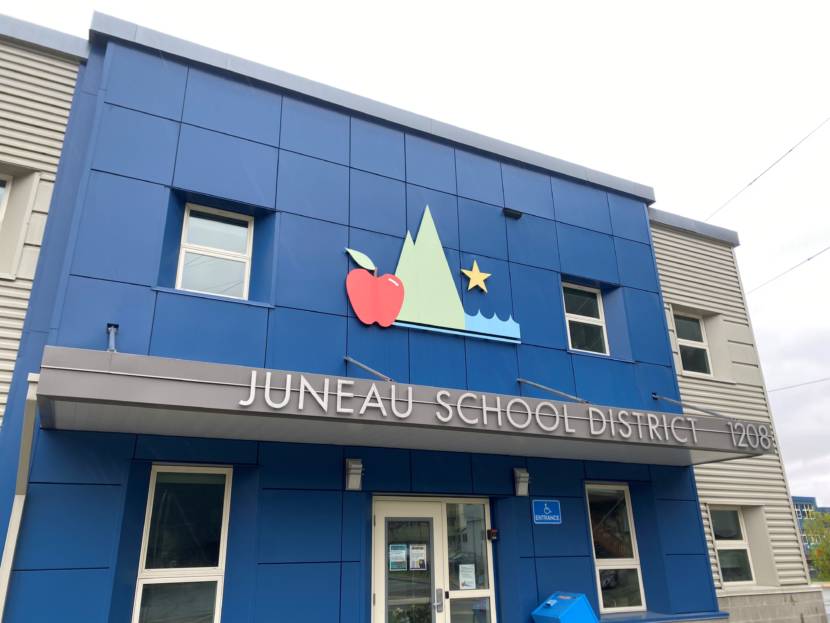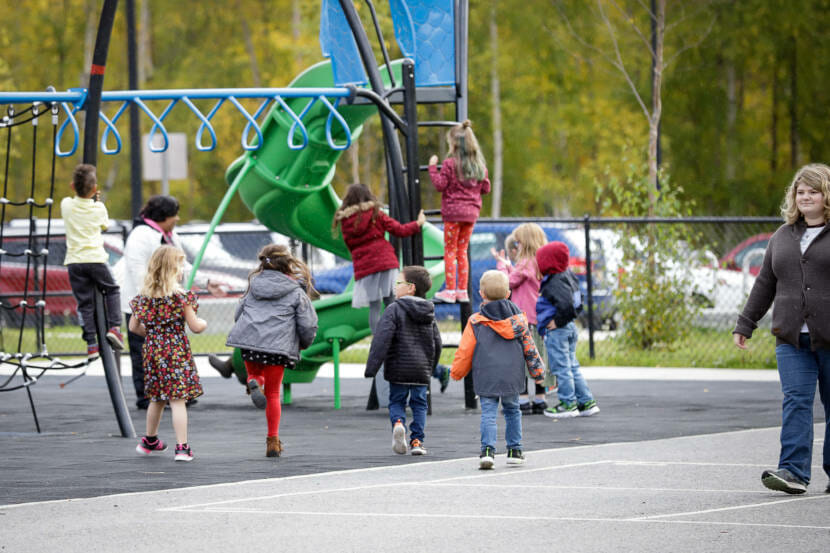ALASKA
Juneau teachers union declares impasse in contract negotiations with district

The Juneau teachers union has declared an impasse in its negotiations over a new contract with the school district. Discussions will continue in the coming months with the help of a federal mediator.
The district’s initial proposal included a pay increase similar to the union’s. But the district also proposed cutting its monthly contributions to health premiums by $434. That’s more than a 25% decrease compared to this year.
Juneau Education Association President Chris Heidemann said that’s a major concern, especially for young teachers who might not have other insurance options, like a spouse’s plan.
“That’s a huge, huge cost to our members, especially the early career teachers,” he said. “That could be devastating to them.”
The union and the district have been negotiating for 10 months. The previous contract expired in June.
Thunder Mountain High School history teacher Jamie Marks said he thinks the district is willing to agree on a reasonable contract. But after the pandemic made teaching even more challenging, he said, the wait for a new contract has been frustrating.
“I’m upset that over the last three years, we have given what we have given and the board has not seen the need to be quicker in its response so that we’re feeling respected,” he said.
Several teachers expressed similar feelings at Tuesday’s school board meeting. Juneau School District Superintendent Bridget Weiss said it’s hard to hear.
“It is stressful on everyone the longer these negotiations go,” she said. “When teachers or any staff begin to feel undervalued, it’s heartbreaking.”
Weiss said the district is facing higher costs with less funding. The base student allocation — the amount of money per student the district receives from the state — hasn’t substantially increased since 2017.
She said she’s hopeful they’ll reach a resolution soon, and the proposed health contribution cuts were meant to start discussions about where teachers wanted district funds to be allocated.
“Did they want money tied up in those insurance contributions at the same level, or did they want money in people’s pockets?” she said.
Heidemann said he’s optimistic they’ll be able to reach an agreement without a strike.
“We had a really great showing at the school board meeting the last two months, and they’re going to be seeing and hearing a lot more from us over the next couple months,” he said. “I think the leverage that we’ll be able to apply will move the school district in the right direction.”
He said he expects federal mediation to begin in January. If the two sides can’t reach an agreement with the mediator’s help, a federal arbitrator will meet with the two sides separately and decide the best way to move forward.
Gov. Dunleavy’s proposed budget continues years-long trend of flat funding for Alaska schools

Gov. Mike Dunleavy’s proposed budget for next fiscal year keeps education funding for K-12 public schools about the same as this year.
Alaska school districts have decried the continued flat funding, saying it’s leading to large budget deficits.
Dunleavy said at a news conference Thursday that his proposal is a jumping off point for legislators, and he expects the school funding amount could increase as they debate the issue.
“For me to put a number in the budget, some will say it’s too little, some will say it’s too much,” he said. “So what we’ve done is we put forth a budget here on Dec. 15, to begin that discussion.”
Alaska schools are funded through what’s called the base student allocation. It’s basically a dollar amount per student.
Dunleavy’s proposal puts it at $5,960, just $30 more than what it had been since 2016. It’s still far below the rate of inflation, and that flat funding essentially means that the money school districts have received has been worth less each year. That’s something Dunleavy said he anticipates coming up in the Legislature when its session begins in January.
“We do understand and we look forward to having discussions with the Legislature on what that education funding will look like going forward,” Dunleavy said. “We will certainly understand there’s inflationary issues that need to be addressed.”
While the current budget forward-funded schools for the next fiscal year, when oil prices were high, Dunleavy said the drop in prices, “practically zero that concept out.”
In a written statement Thursday evening, Anchorage School District Superintendent Jharrett Bryantt said he was disappointed by Dunleavy’s proposal but looked forward to working with the governor and Legislature to find a funding solution.
“While we are disappointed to learn there is no additional public education funding in the governor’s proposed budget, we are very encouraged to learn he recognizes the inflationary pressure on our District, our families, and our communities and wants to work with us on sensible school funding solutions,” Bryantt said.
For the Anchorage district, flat funding would mean a $48 million budget deficit next school year. The school board is set to vote on preliminary cuts on Monday, with proposals ranging from closing schools to cutting programs to increasing class sizes.
Senator-elect Cathy Giessel said she thinks the Legislature will definitely discuss school funding during the upcoming session, but said the funding formula is complicated. In an interview Thursday, she said she didn’t yet have an ideal funding amount.
“It’s so complex that it is going to take a lot of attention, and will take a lot of time for the Legislature to actually review it, understand it and make the appropriate revision,” she said. “But we need to do it.”
In total, Dunleavy’s education budget is slightly smaller than last year’s, likely due to declining enrollment across the state. The first day of the next legislative session is Jan. 17.
Alaska Public Media’s Kavitha George contributed to this report.
No comments:
Post a Comment